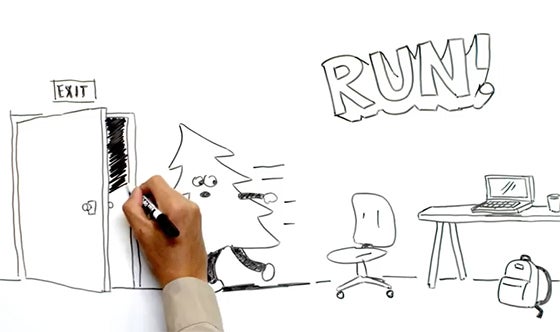Preparing for the worst-case scenario

As part of continuing efforts to prepare the campus community to confront emergency situations, the Department of Public Safety has created a new training video that describes how to react to an active shooter scenario. Stanford Chief of Public Safety Laura Wilson and Emergency Manager Keith Perry answer questions about responding to emergencies on campus. They hope parents will encourage their students to watch the video.
How should people prepare for an emergency on campus?
Wilson: None of us thinks this is going to happen to us, but we need to have the mindset of “what if?” What if there were an earthquake or a fire? What if there were an active shooter? No matter what type of emergency situation, the important thing is to know where your exit points are and to have a plan.
What actions should individuals be prepared to take if confronted with, for instance, an active shooter?
Wilson: If there were an active shooter and you can escape, do so. Put distance between you and the threat. If you cannot safely escape, then hide – including putting heavy or solid objects between you and a potential threat. If you are hiding, remaining quiet and silencing cell phones are important. As a last resort, if you believe you or those around you are in immediate jeopardy, you can make the personal decision to fight to try to disarm or prevent an attacker from harming others. The three words to remember are run, hide, fight. The Stanford Department of Public Safety has developed a training video that illustrates these concepts. It is also critically important that people follow any directions that police give to them because specific situations can call for different prevention and safety measures.
What are the protocols for responding to an emergency, especially when a lockdown is invoked?
Perry: There are two main protocols we have for responding to an emergency. One is to evacuate, and one is to shelter in place. People need to understand how both of those would be implemented in their local area. Where would they go and what would they do under each scenario?
Wilson: Upon learning of a threat such as an active shooter, first responders will be focused on stopping the threat and then providing assistance to those who may be injured. The university will send out an AlertSU with general guidance as to what to do. I want to emphasize again that individuals must make decisions for themselves as to what action to take. Remove yourself from the danger if you can. If you cannot, then take steps to protect yourself from harm. Individuals will have to make decisions based on their circumstances. General guidance to the entire campus community may be different from someone who is in the immediate vicinity who could escape.
How will the university let students, faculty and staff know there is a threat?
Wilson: We will use the AlertSU system to send a text and email. In the future, we will have the ability to send information via campus VoIP phones that can function as speakers to make public announcements. These incidents typically happen very quickly, and the immediate danger could be over before an AlertSU can be sent, which is why it is so important that people have a plan in advance and have a mindset about what they would do.
We would be updating emergency.stanford.edu. People will want to go to that website for information and directions in any campus emergency. All communication will be updated there.
Perry: Faculty, staff and students need to make sure they are registered for AlertSU and that all of their numbers and contact information in StanfordYou, their directory and AlertSU emergency contacts are current so that they can make sure they are receiving emergency notices from the university. As the chief mentioned, though, the people in the immediate vicinity will be the first to become aware of a threat. They will need to make their own decisions about whether to run, hide or fight based on what they see and hear in their immediate vicinity well before any alert can be issued by the university. People need to be prepared to act based on their best judgment and training without receiving external instructions.
Read the full story in Stanford Report.
